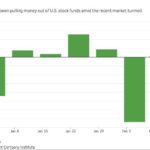On February 25, 2018 I posted an article in which I touched upon Warren Buffett’s 2017 Letter to Berkshire Hathaway Shareholders. In that article I provided a link to the letter and do so again here for ease of reference.
In his letter, Buffett specifically addressed the risks associated with employing the use of debt when it comes to investing.
On page 10 in this letter, Mr. Buffett offers his the strongest argument he can muster
“against ever using borrowed money to own stocks. There is simply no telling how far stocks can fall in a short period. Even if your borrowings are small and your positions aren’t immediately threatened by the plunging market, your mind may well become rattled by scary headlines and breathless commentary. And an unsettled mind will not make good decisions.”
Despite his repeated advice over the years regarding the risk of borrowing to invest in equities, it is readily apparent not everyone heeds his words of wisdom.
The Financial Industry Regulatory Authority (FINRA), a not-for-profit organization authorized by Congress to protect America’s investors by making sure the broker-dealer industry operates fairly and honestly, tracks and reports the level of margin debt on a monthly basis. Looking at historical data you can see that investors have dramatically increased the use of margin debt. In February 2010, the debit balances in retail and institutional securities margin accounts amounted to $263.657 billion. In January 2018, this figure had climbed to $665.716 billion.
 Source: Financial Industry Regulatory Authority
Source: Financial Industry Regulatory Authority
The increase in margin levels over the years is attributed to investors’ efforts to pocket bigger gains by ramping up their exposure to stocks. Although the tactic of borrowing to invest in equities to generate outsized gains works well in theory, investors expose themselves to outsized losses when employing this strategy. I encourage you to read what can happen when the investments posed as security for margin debt fall below stipulated margin requirements.
It will be interesting to see the data for February 2018 as the heightened volatility at the begining of February resulted in investors pulling out a substantial amount of money from US stock funds.
 Source: Investment Company Institute
Source: Investment Company Institute
Evidence of the risks involved in the use of margin debt is borne out by Harvey Hajiyan’s recent experience. The irony of this situation is that Mr. Hajiyan is a 35-year-old financial adviser who resides in Toronto, Ontario!
Hajiyan, who had been investing for more than a decade, assumed stocks would continue to grind higher this year. He was confident the Dow and the S&P 500 would continue to post gains as it had for much of the past two years without a pullback. “All of the strategists agreed the market would go up.” said Hajiyan.
At the end of January 2018, Hajiyan used an exchange-traded product to wager that low volatility would persist and stock prices would remain stable. He employed the use of margin to fund a large position in the ProShares Short VIX Short-Term Futures exchange-traded fund (SVXY); this instrument rises in value as long as stock prices remain stable.
After a lengthy period in which market volatility (VIX) was muted, we encountered a sudden brief period of heightened volatility; on February 5, 2018, the Dow Jones Industrial Average fell ~8.53%.
When the market indices fell into correction territory thus erasing one of its best starts in years, Hajiyan’s investment was nearly wiped out and he was forced to liquidate hundreds of thousands of dollars of securities to answer the margin call.
“I was in denial," said Hajiyan after he realized he lost about $600,000 Canadian dollars (US$472,260) worth of his C$1.1 million investment portfolio.
While I originally sympathized with Hajiyan, I quickly changed my mind when I read that despite losing a sizable portion of his wealth, he indicated the experience had not soured him on the use of margin debt. Hajiyan states that “If I wasn’t using margin, I wouldn’t be at this level. As my money grows, I’ll limit the amount of margin I use.”
Hopefully after having made that comment Hajiyan listened to an interview on CNBC on February 26th in which Buffett suggested greed was the primary driver of margin debt.
"Borrowing money is a way of trying to get rich a little faster, but there are plenty of good ways to get rich slowly. And you can have a lot of fun while you're getting rich as well. My partner, Charlie, says that there's only three ways that a smart person can go broke. He says, 'liquor, ladies, and leverage.'"
Hajiyan’s experience is a stark reminder to me of another Buffett pearl of wisdom.
"Rule No. 1: Never lose money. Rule No. 2: Never forget rule No. 1."
I suspect my aversion to risk has dampened my investment returns over the years. I am, however, confident that I will continue to sleep well if I maintain Buffett’s and Munger’s philosophy with respect to the use of debt for investment purposes. I certainly do not want to depend on the kindness of strangers nor do I want to risk what I have and need in order to obtain what I do not need.
Note: I sincerely appreciate the time you took to read this article. Please send any feedback, corrections, or questions to [email protected]
Disclaimer: I have no knowledge of your individual circumstances and am not providing individualized advice or recommendations. I encourage you not to make any investment decision without conducting your own research and due diligence. You should also consult your financial advisor about your specific situation.
I wrote this article myself and it expresses my own opinions. I am not receiving compensation for it and have no business relationship with any company whose stock is mentioned in this article.


